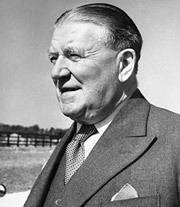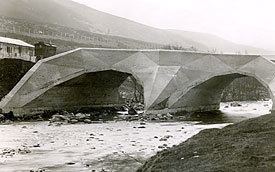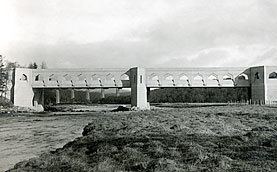Children Owen Tudor Williams Role Engineer | Name Owen Williams | |
 | ||
Full Name Evan Owen Williams Practice name Sir Owen Williams & Partners Significant projects Gravelly Hill Interchange, Birmingham Similar People William Curtis Green, Jock Kinneir, Margaret Calvert | ||
Significant advance Concrete engineering Engineering discipline Architectural engineering | ||
Owen williams the man who ate a hurricane the broom cupboard sessions
Sir Evan Owen Williams (20 March 1890 – 23 May 1969) was a British engineer and architect, known for being the principal engineer for Gravelly Hill Interchange (known popularly as Spaghetti Junction) as well as a number of key modernist buildings, including the Express Building in Manchester and Boots D10 Building in Nottingham.
Contents
- Owen williams the man who ate a hurricane the broom cupboard sessions
- Owen williams banned for 6 weeks for contact with the eyes
- Career
- List of works
- References

Primarily an engineer, he was not classically trained as an architect but showed an exceptional degree of proficiency with both flair and functionality in his buildings which were considered far ahead of their time during the 1930s. Williams ultimately believed architecture and engineering must be inseparable.

Owen williams banned for 6 weeks for contact with the eyes
Career

Williams born at 16 Caroline Terrace in Tottenham, London, England, on 20 March 1890. He was the son of Evan Owen Williams, a Welsh-born grocer and Mary Roberts. Originally both farmers, they both moved to London some years before Owen was born. Williams had two sisters and two brothers. Mary Kate died young, but the second born, Elizabeth Maud, became an author. Owen had an older brother, Robert Osian, who was a successful banker and came out of retirement to manage the finances of his brother's engineering practice which was launched in 1940. Williams attended Tottenham Grammar School and Williams excelled in mathematics. He was apprenticed to the Electrical Tramways Co. in London in 1907 and at the same time did an engineering degree at the University of London.
In 1912 Williams assumed a position as engineer and designer with the Trussed Concrete Company. Seven years later, he started his own consulting firm, Williams Concrete Structures.
Appointed chief consulting civil engineer to the British Empire Exhibition which included the old Wembley Stadium. The commission also included the Palace of Industry building in Brent, the first building in the United Kingdom to use concrete as the exterior. The building was listed in 1997 in recognition of this but was delisted in 2004 after an appeal by a property developer. Williams was recognised for his achievements and recognised a knighthood in 1924.
Through the exhibition, Williams came into an association with its architect, Maxwell Ayrton, which led to their working together on the design of Williams's bridges in Scotland.
Williams designed his buildings as functional structures sheathed with decorative facades. More an engineer than an architect, Williams produced a series of reinforced concrete buildings during the period between the wars. After World War II he worked on developing the first plan for Britain's motorway system. His other works include the Dorchester Hotel, the Boots pharmaceutical factory in Beeston, Nottinghamshire, the M1 motorway and the Pioneer Health Centre in Peckham, south London.
In the 1940s the company expanded and became Sir Owen Williams and Partners. This followed the building of the Daily Express Building, Manchester, which Williams designed. Contrary to popular belief, the Manchester building was the only one of the three Express Buildings which Williams designed – the others in Glasgow and London were designed by Ellis and Clark. Although Williams was more of an engineer than an architect, the Manchester Express Building was lauded for architecture and demonstrated his proficiency as an architect.
His nephew is quoted as saying "Just fancy Taid taking all that time over the trip to Barnet, when 60 years later his Grandson was head of Civil Engineering for the M1 ....."
Owen Williams' grandson, Richard Williams, was chief executive of the Owen Williams Group until its acquisition by Amey in 2006.
List of works
(Including bridges)
